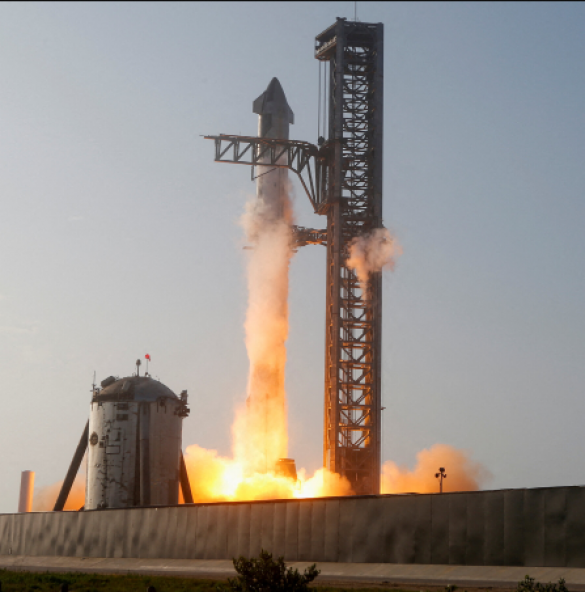
Washington: SpaceX, the innovative aerospace company founded by Elon Musk, achieved yet another milestone in its ambitious quest to revolutionize global internet access.
On September 9, SpaceX successfully launched a Falcon 9 rocket from the Cape Canaveral Space Force Station in Florida, carrying a payload of 22 Starlink satellites into orbit.
This launch represents a significant step forward in SpaceX's mission to create a vast constellation of satellites that will deliver high-speed internet connectivity to communities around the world, particularly in underserved and remote areas.
Also Read: Hero launches BS6 Destini 125 and Maestro Edge 125
Falcon 9: The Workhorse of SpaceX
The Falcon 9 rocket is SpaceX's trusted workhorse, renowned for its versatility in deploying both crewed and cargo missions into orbit. With a proven track record of reliability, the Falcon 9 has become SpaceX's most frequently used rocket, successfully completing over 1,500 missions to date.
This particular launch of the Falcon 9 took place at 11:12 p.m. EDT (0312 UTC), adding another chapter to SpaceX's ongoing legacy of space exploration and satellite deployment. What sets this mission apart is not just the number of satellites being sent into space but the overarching goal of the Starlink program—to bridge the digital divide by offering high-speed internet access to populations worldwide.
Starlink: A Global Internet Revolution
The 22 Starlink satellites carried by the Falcon 9 rocket are part of a broader vision to create a constellation of thousands of satellites in low Earth orbit. These satellites, designed to orbit at an altitude of approximately 550 kilometers (342 miles), form the backbone of SpaceX's Starlink project.
Starlink aims to bring internet access to underserved and remote areas, providing a lifeline for communities previously left in the digital dark. By strategically positioning these satellites in low Earth orbit, SpaceX can deliver high-speed internet access with low latency to virtually any location on the planet.
The potential impact of Starlink is profound. It has the capacity to revolutionize education, healthcare, agriculture, and commerce in areas lacking reliable internet access. This initiative aligns with SpaceX's broader mission of advancing humanity's presence beyond Earth and forging new frontiers in technology and innovation.
Also Read: Writing a Book with ChatGPT: A Comprehensive Guide
Booster Reusability Milestone
In a remarkable display of SpaceX's commitment to sustainability and cost-effectiveness, the Falcon 9 rocket's first-stage booster successfully executed a controlled landing on the drone ship "A Shortfall of Gravitas" in the Atlantic Ocean. This event marked a historic achievement—the booster's seventh successful flight. It is the first time a Falcon 9 booster has been reused seven times, highlighting SpaceX's dedication to reusable rocket technology and its potential to reduce the cost of space access.
Record-Breaking Year for SpaceX
The launch of the Falcon 9 rocket with 22 Starlink satellites represents SpaceX's 63rd successful launch in 2023, breaking the company's own record for the highest number of launches in a single year. With multiple missions executed flawlessly throughout the year, SpaceX is on course to surpass the milestone of launching more than 100 rockets in 2023.
SpaceX's successful launch of the Falcon 9 rocket carrying 22 Starlink satellites underscores the company's commitment to expanding global internet access.
With each launch, SpaceX edges closer to realizing its vision of a connected world, where high-speed internet is accessible to all, regardless of geographical location.
As SpaceX continues to pioneer reusable rocket technology, it is driving down the cost of space access and making ambitious projects like Starlink more economically viable.
This not only benefits underserved communities but also advances our understanding of space exploration and commercial spaceflight.
Also Read: HCL Tech Secures Cloud Agreement with Siemens
In a world where connectivity is increasingly vital, SpaceX's Starlink initiative offers the promise of a brighter, more inclusive future—a future where the digital divide narrows, and the benefits of the internet reach even the most remote corners of the Earth.
With each successful launch, SpaceX brings this vision one step closer to reality, shaping the future of global communications and technology